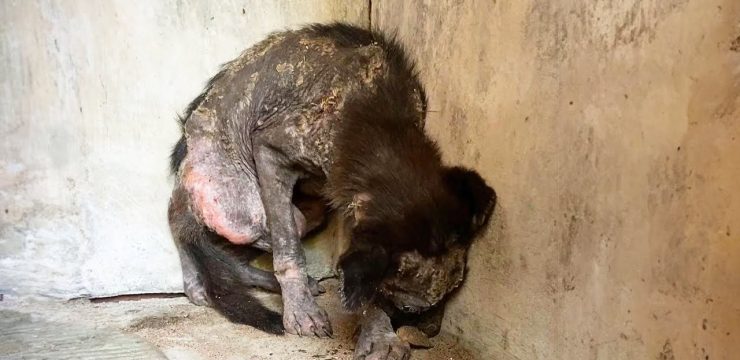Tick eggs are often overlooked because of their small size and hidden locations, but understanding what they look like and how they function is crucial for anyone trying to prevent or manage a tick infestation. These eggs are typically laid in clusters that resemble small piles of jelly-like beads. The female tick, after feeding on a host, can lay thousands of eggs in environments that offer moisture, darkness, and shelter—such as in soil, among fallen leaves, or even in hidden areas inside homes if conditions are suitable. Once laid, the eggs hatch into six-legged larvae, which then feed and molt into eight-legged nymphs. Nymphs later transform into adult ticks, completing the cycle. If not disrupted, this process can lead to a rapid increase in tick populations in both indoor and outdoor environments.

Being able to identify the presence of tick eggs is the first critical step in stopping an infestation before it begins. These eggs are tiny, brownish-red, and often hard to spot unless you’re actively looking for them. Because they prefer dark and moist areas, you might find them nestled under garden mulch, near piles of stacked firewood, or in shaded corners of a home—especially basements, crawlspaces, or garages. Outdoors, garden beds and areas under dense vegetation provide ideal breeding grounds. While they may appear as harmless tiny clusters, their presence signals that female ticks have found your property to be a suitable environment for reproduction, which can quickly become a much larger problem if left unchecked.
Tick eggs themselves don’t carry diseases or pose a direct threat to humans or pets. However, their existence marks the beginning of a potentially dangerous situation. Adult ticks are well-known carriers of serious diseases such as Lyme disease, Rocky Mountain spotted fever, and babesiosis. These diseases can be transmitted to both humans and animals through the bite of an infected tick. Therefore, stopping the problem at the egg stage is not just about maintaining comfort in your home and yard—it’s also a proactive measure to protect the health of your family and pets. Identifying and removing eggs before they hatch prevents new generations of ticks from emerging and spreading throughout your environment.
When you discover a cluster of tick eggs, it’s vital to act quickly and safely. Do not touch the eggs directly with your hands, as you could inadvertently spread them to other areas or contaminate yourself. Instead, use gloves or a paper towel to carefully scoop the cluster into a sealed plastic bag. Once sealed, dispose of the bag in an outdoor garbage bin to prevent accidental hatching indoors. You should also thoroughly clean the area where the eggs were found. Remove any nearby leaf litter, grass clippings, or debris that might be harboring additional eggs or adult ticks. These surroundings often act as camouflage, hiding infestations in plain sight.
Safe and effective removal involves more than just physical cleanup. Using a diluted bleach solution to treat the affected area can help ensure that no residual eggs survive. If the eggs were found indoors, vacuuming the entire room—including baseboards, carpets, and furniture crevices—can help eliminate any ticks or larvae that may have escaped. Be sure to immediately empty and clean your vacuum after use. For outdoor environments, diatomaceous earth is a natural, non-toxic powder that damages the exoskeletons of ticks and other pests, effectively killing them. Sprinkle it in areas where tick eggs or adult ticks are likely to be hiding, and reapply after rain or heavy watering.
Preventing tick infestations requires consistent effort. Start by maintaining your yard properly. Mow the lawn regularly and remove any tall grass or weeds, which can act as highways for ticks traveling from wooded areas. Eliminate leaf piles, brush, and overgrown shrubs near your home. Creating a border of gravel or wood chips between your lawn and wooded or brush-filled areas can deter ticks from migrating onto your property. Within your home, reduce clutter that might provide ticks with hiding places. Vacuum carpets, upholstery, and floors frequently, especially if you have pets that spend time outdoors.
Your pets can be one of the main ways ticks are introduced into your home, so protecting them is essential. Use vet-recommended tick prevention treatments, whether in the form of collars, oral medications, or topical applications. Regularly inspect your pets for ticks, especially after walks through grassy or wooded areas. Pay attention to hidden spots like under the collar, between the toes, or behind the ears—areas ticks often favor.
In some cases, even with diligent prevention, you may find yourself dealing with a tick problem that’s too large or persistent to handle on your own. If you’ve already taken basic precautions and continue to find eggs or adult ticks, it might be time to contact a professional pest control service. These professionals can perform a detailed inspection of your property, pinpoint the exact areas of concern, and apply targeted treatments designed to eliminate ticks at every life stage. They also provide long-term strategies to prevent future infestations, such as specialized landscaping recommendations or perimeter treatments around your home.
By understanding the tick life cycle, recognizing the signs of egg clusters, and taking both immediate and preventative actions, you can significantly reduce the risk of a tick infestation in your home and yard. Early detection is key, and ongoing maintenance ensures your environment remains a place where ticks cannot thrive. In doing so, you not only improve the comfort of your living spaces but also safeguard the health of everyone who shares them.





